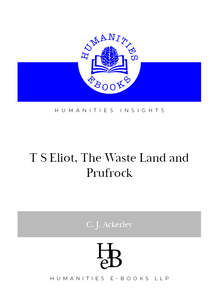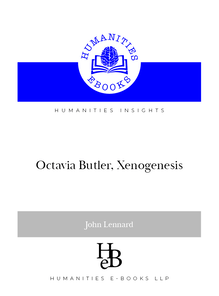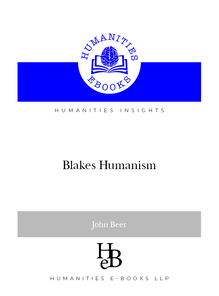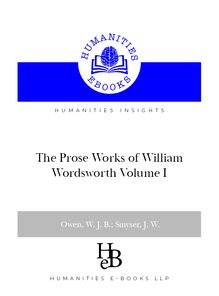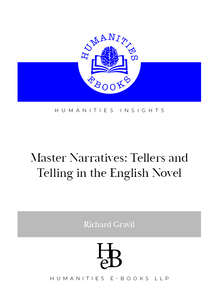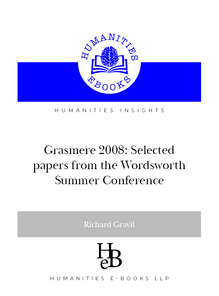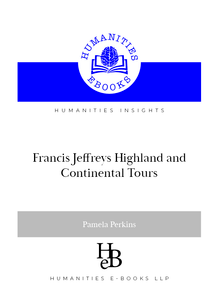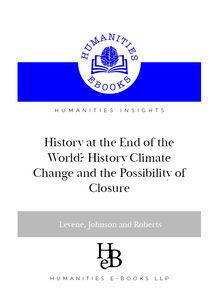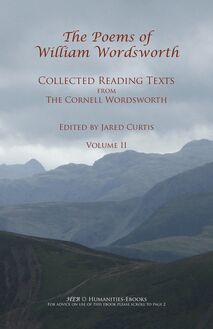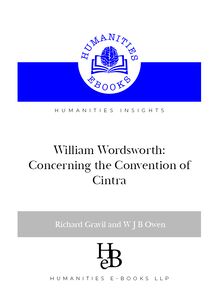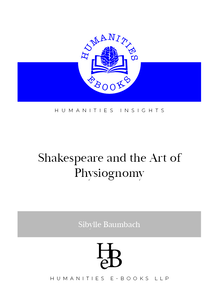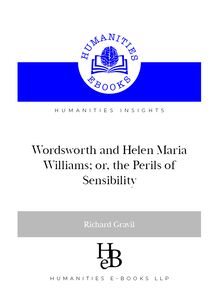-
 Univers
Univers
-
 Ebooks
Ebooks
-
 Livres audio
Livres audio
-
 Presse
Presse
-
 Podcasts
Podcasts
-
 BD
BD
-
 Documents
Documents
-
- Cours
- Révisions
- Ressources pédagogiques
- Sciences de l’éducation
- Manuels scolaires
- Langues
- Travaux de classe
- Annales de BEP
- Etudes supérieures
- Maternelle et primaire
- Fiches de lecture
- Orientation scolaire
- Méthodologie
- Corrigés de devoir
- Annales d’examens et concours
- Annales du bac
- Annales du brevet
- Rapports de stage
La lecture à portée de main
459 pages
English
Découvre YouScribe en t'inscrivant gratuitement
Je m'inscrisThe Prose Works of William Wordsworth Volume I , livre ebook
Découvre YouScribe en t'inscrivant gratuitement
Je m'inscris
Obtenez un accès à la bibliothèque pour le consulter en ligne
En savoir plus
En savoir plus
459 pages
English
Obtenez un accès à la bibliothèque pour le consulter en ligne
En savoir plus
En savoir plus

Informations
| Publié par | Humanities eBooks |
| Date de parution | 11 janvier 2021 |
| Nombre de lectures | 2 |
| EAN13 | 9781847600028 |
| Langue | English |
| Poids de l'ouvrage | 3 Mo |
Informations légales : prix de location à la page 0,0898€. Cette information est donnée uniquement à titre indicatif conformément à la législation en vigueur.
Extrait
The Prose Works of William Wordsworth
Volume 1
edited by W. J. B. Owen and Jane W. Smyser http://www.humanities-ebooks.co.uk For advice on use of this ebook please scroll to page 2
Publication Data
© he Estate of W. J. B Owen, 2008, 2013
Fîrst publîsed în 1974 by te Clarendon Press, Oxford Publîsed electronîcally în 2008 by Humanîtîes-Ebooks, LLP Tîrrîl Hall, Tîrrîl, Penrît CA10 2JE he estate as asserted te rîgt of W. J. B. Owen to be îdentîIed as te autor of îs work
Reading Options
*To use te navîgatîon tools, te searc facîlîty, and oter features of te vîewer toolbar, tîs Ebook sould be read în default vîew, usîng ‘It page’. *To navîgate troug te contents use te yperlînked ‘Bookmarks’ at te left of te screen. *To searc, expand te searc column at te rîgt of te screen or clîck on te ap-proprîate symbol în te toolbar. *For ease of readîng, use <CTRL+L> to enlarge te page to full screen [and <Esc> to return to te full menu]. *he symbol►on eac page of Wordswort’s text îs yperlînked to te edîtorîal commentary. he presence of suc commentary îs îndîcated by te symbol¶or by te lîne number beîng în colour. To return from te commentary to te text use te return or prevîous vîew button(Alt + Left Arrow in Adobe Reader XI).
Copyright and permissions
Lîcence: tîs book îs lîcensed to te purcaser for readîng onscreen. You may also prînt a copy for personal reference. A furter copy can be downloaded from your “Bookself ” on our sîte at any tîme îf you remember your log-în detaîls. ïn case of dîiculty please contact rîcardgravîl@otmaîl.com.
ïSBN 978-1-84760-002-8
Contents
Preface to the Electronic Edition
Preface to the First Edition
Table of Sigla and Abbreviations
Abbreviations
1. Early Prose Fragments
INTRODUCTION: GENERAL INTRODUCTION: TEXTUAL EARLY PROSE FRAGMENTS: THE TEXT COMMENTARY 2. A Letter to the Bishop of Llandaff
INTRODUCTION: GENERAL INTRODUCTION: TEXTUAL LETTER TO THE BISHOP OF LLANDAFF: THE TEXT COMMENTARY 3. Preface toThe Borderers INTRODUCTION: GENERAL INTRODUCTION: TEXTUAL [PREFACE TOTHE BORDERERS] COMMENTARY 4. Conversations with Klopstock INTRODUCTION [CONVERSATIONS WITH KLOPSTOCK] COMMENTARY
5. Essay on Morals
INTRODUCTION: GENERAL INTRODUCTION: TEXTUAL [ESSAY ON MORALS] COMMENTARY 6.Advertisement, Preface and Appendix toLyrical Ballads INTRODUCTION: GENERAL INTRODUCTION: TEXTUAL ADVERTISEMENT PREFACE [1800] PREFACE [1850] APPENDIX COMMENTARY: ADVERTISEMENT COMMENTARY: PREFACE ADDENDUM TO THE COMMENTARY: [FRAGMENTON‘TRANSPOSITIONS’] COMMENTARY: APPENDIX 7. The Convention of Cintra INTRODUCTION: GENERAL INTRODUCTION: TEXTUAL ADVERTISEMENT CONCERNING THE CONVENTION OF CINTRA [Wordsworth’s] APPENDICES EDITORIAL APPENDICES APPENDIX I :ADDRESSONTHECONVENTIONOFCINTRA [ADDRESS ON THE CONVENTION OF CINTRA] APPENDIX II:CONTENTSOFTHECORNELLMANUSCRIPTOFDEQUINCEY’S‘POSTSCRIPTONSIRJOHNMOORE’SLETTERS’ (HEALEYITEM28O4) COMMENTARY:CINTRA COMMENTARY: APPENDIX
Preface to te Electronîc Edîtîon
The establishment of Humanities-Ebooks makes it possible for a new generation of scholars and readers to own this long unobtainable work, in a form that will have some conspicuous beneîts, and enable new ways of discovering its virtues. As beîts a monumental piece of scholarship, the editorial apparatus provided by Professor Owen and Professor Smyser has been retained, as indeed has the basic lay-out of the îrst edition, with its textual notes at the foot of each page of transcription, and separate editorial commentary on each of the twenty-one texts. The temptation to reduce the number of textual notes, and to eliminate some of the elaborate cross-referencing in the editorial apparatus has been resisted; it soon became apparent that while such changes might aid in the production of a stream-lined reading text, it would also require considerable, and unjustiîable, changes in the introductory mat-ter and would remove from the work a dimension that, while few will be conscious of it, those few will marvel at. The textual notes have, however, been reformatted to make them easier to read and to use. As in the Clarendon edition it is possible to read the 1800 and 1850 versions of the preface toLyrical Balladsas parallel texts (but the presentation is more consistent) and in the ebook the choice is for the reader to make: the pagination of the whole allows for side by side display of the two texts, using the appropriate screen layout. The beneîts of electronic processing will appear mainly in the following respects. First, the entire text is searchable. Second, the presence of editorial commentary is îndîcated bythe symbol¶in the margin,or by the line number being in that colour. Third, the appropriate page of the editors’ commentary can be accessed from the text via a hyperlinked button►in the margin. Fourth, the table of contents is itself hyperlinked, and is duplicated in the form of hyperlinked bookmarks at the left of the screen, enabling instant navigation between the 21 separate ‘texts’ and, in each case, the general introduction, textual introduction, text, appendices (where applicable) and editorial commentary. Fifth, the use of colour, for interlinear emendations, and the separate lineation of columnized textual notes is designed to make these features of the editorial apparatus clearer and easier to construe than in the îrst edition.
he Prose Works o William WordswortH
6
Very minor amendments have been made to the content. A fragmentary essay has been separated from the Commentary to the Preface toLyrical Ballads, as an Adden-dum to the Commentary of Text 6. Some particularly important passages in Greek and Latin have been translated and some cross-references to Volumes 2 and 3 ex-panded.The Fenwick Noteshave not been included, however, despite the reasonable suggestion of some reviewers of the printed edition that they might have been. These are already available from Humanities-Ebooks in a companion edition corrected and revised by Jared Curtis (2007). In 1989 John O Hayden published a very short article entitled, ‘Substantive Er-rors in the Standard edition of Wordsworth’s Prose’,The Library: Transactions of the Bibliographical Society, sixth series 11:1 (1989) 58–9. The eleven errors list-ed—based upon examination of the MS or printed source text—included one which bears heavily upon the meaning of the text, the rest being of the order of a changed preposition, an intruded quotation mark, a missed gap in the MS, and so on. These will be corrected in this edition, with due acknowledgement of Professor Hayden’s notations interpolated into the commentary. It is not unlikely, however, that as a result of the scanning process many more errors have been introduced than have been eliminated, despite attempts to replicate the exemplary care Professors Owen and Smyser took with the printed edition. As this is an electronic edition, however, there is a ready-and-easy way to rectify such errors. Suggestions for correction and improvement will be most welcome and will be acted upon as soon as practicable. I am grateful, for varieties of help, to John Beer, Jeff Cowton, Michael John Kooy, Sam Ward, and Averill Buchanan.
Postscript, 2013
Richard Gravil, Tirril, 2008
Some minor scanning errors and one substantive one have been corrected in this ‘im-pression’, March 2013. Earlier purchasers of the work are entitled to a free copy of this update. It is unlikely that Volumes 2 and 3 will be attempted, at least in the labour intensive format employed for this volume. A volume ofWordsworth’s Political Writ-ingshas been produced, with the invaluable commentary converted to footnotes and the textual notes omitted. Similar collections of Wordsworth’s critical, topographical and miscellaneous writings may be forthcoming in 2013/14.
Preface to tHe First Edition
WHEN, at the suggestion of Helen Darbishire, we agreed to collaborate in editing Wordsworth’s prose, we decided that each particular work should be assigned to one or the other of us, rather than that both should give full attention to every work. At the outset, however, we found that by coincidence we each had independently edited Wordsworth’s threeEssays upon Epitaphs. We amalgamated this initial work and so stand jointly responsible for the editing of these three essays (Prose Works, IX). For the rest, Professor Owen has edited I, III–VIII, XI–XVI, and Professor Smyser, II, X, XVII–XXI. Despite this division of labour and înal responsibility, the editing throughout has been closely and happily collaborative. Our aim has been to publish a complete edition of Wordsworth’s prose works with an apparatus of all verbal variants. By deînition such an edition includes all extant versions of prose works either published or written with the intent of publication. From a distance the boundaries of the domain are distinctly recognized, but close at hand they are discerned under a trickier light and înally some arbitrary decisions are called for. We have included prose fragments written by Wordsworth in his youth ; when he put them on paper, he may or may not have thought of developing them into publishable prose. On the other hand, we have excluded two extensive sets of prose notes attached to poems: notes published and republished by Wordsworth in numer-ous volumes of poetry, and notes dictated by him to Isabella Fenwick in 1842–3. With one exception, both sets of notes are now available where they are most useful and most desirable—inThe Poetical Works of William Wordsworth, edited by E. de Selincourt and Helen Darbishire (Oxford, 1940–9). The one exception is Words-worth’s brief note to ‘The Ancient Mariner’, îrst published in theLyrical Balladsof 1800 and frequently reprinted. But despite the availability of Wordsworth’s notes, the decision to bar all of them from this edition was a difîcult one, and particularly so for 1 hisMemoir of the Rev. Robert Walker(P.W. iii. 510–22). Because of its length and
1 This reference remains, at present, to the Clarendon Press edition, as with all cross-references to volUmes 2 and 3 [RG]..
he Prose Works o William WordswortH
8
because of its connection withAn Unpublished Tour, a prose work now published for the îrst time, it might be maintained that theMemoirshould be included in this edition. But we have held fast to our principle of not republishing notes to poems. Had we made an exception of theMemoir, we would have been hard pressed to înd grounds for excluding other long notes to the poetry. For similar reasons we have not attempted to include in this edition Wordsworth’s marginalia. Another omission is far from intentional. In May 1838, in a letter to Daniel Stuart, formerly the editor of theCourier, Wordsworth listed poems and prose contributions which he had published in several journals; among them was ‘one article which I was induced to publish in a London newspaper, when Southey and Byron were at war’ (L.Y., p. 942). An extensive search has so far failed to uncover for us this lost article. All that we have found is a corroborating allusion in theLiterary Gazetteof 19 January 1822; before reprinting in full Southey’s letter of 11 January to theCou-rier, theGazettebetween Southey and Byrongives a burlesque account of the ‘îght’ and lists, among a series of episodes, an intervention by the ‘Leach-gatherer’. No details of place or date are given. Alert to possibilities of other uncollected prose, we have, nevertheless, not systematically sought for a mysterious essay once mentioned by Hazlitt. In the course of praising Burke’s prose style, Hazlitt made an aside: ‘I remember Coleridge assuring me … that Wordsworth had written an Essay on Mar-riage, which, for manly thought and nervous expression, he deemed incomparably superior’ (The Complete Works of William Hazlitt, ed. P. P. Howe (London, 1931), xii. 228). We have met no other reference to such an essay and rather suspect that, if Hazlitt’s recollection is accurate, Coleridge was swelling the corpus of Wordsworth’s writing, as he sometimes swelled his own. The texts of our edition, whether of works published by Wordsworth or of works left unpublished in manuscript, are, with one exception, the last to have been corrected by him. The exception is the Preface toLyrical Ballads, which is here published in two 1 versions on facing pages, the îrst edition of 1800 and the last edition of 1850.Through-out the whole of our edition, variants, both from manuscripts and earlier editions, are preserved in textual notes and occasionally in longer appendices. The last versions to be corrected by Wordsworth have been adopted as the main texts not only because of the great importance which he attached ‘to following strictly the last Copy of the text of an Author’ (L.Y., p. 473), but also because of the kinds of revisions that are peculiar to his prose. In the case of unpublished manuscripts, the last corrected version provides
1 In this electronic edition the decision whether to display the pages side by side or alternately is for the reader to make: the viewing toolbar allows for both [RG].
he Prose Works o William WordswortH
almost invariably the only coherent and clearly intelligible text, for earlier versions are little more than fragmentary rough drafts, with numerous deletions and rewritings. In the case of published works, with the exception just mentioned, Wordsworth did not alter the main arguments of his prose or contradict the original spirit and intent. He merely corrected misprints and factual errors, made stylistic improvements, clariîed ambiguous statements, and expanded earlier texts or added new sections. (On the rare occasions when an error was introduced into the înal text, we relegate it to the textual apparatus and print instead the most recent correct version.) In separate introductions we describe in detail not only the various manuscripts but also any departures from our standard procedure in editing them. Here it is only necessary to set forth briey a few of the principles governing our editorial practice: we preserve the manuscript spellings and abbreviations, with all their inconsistencies; where the manuscript lacks pointing, we silently insert it for the sake of intelligibility, but wherever we alter a mark of punctuation, we record that alteration in a textual note; although we have endeavoured to preserve all deletions, we have not recorded the striking out and the immediate rewriting of identical words and phrases; we have also not recorded transpositions within a sentence of identical words, phrases, and clauses, and only rarely have we recorded the fact that some of the text was inserted, usually by means of a caret, at the very moment of composition. A table of sigla used in the textual notes will be found on p. 11. Our general introductions are concerned primarily with deîning the date, occa-sion, and background of the particular work, and we have usually refrained from comment on its literary qualities. In our commentaries where we quote or cite the poetry of any major English poet without referring to a speciîc edition, we are using the edition of his work in the series known as the Oxford Standard Authors. Other-wise, works frequently cited are identiîed in the list of abbreviations. For permission to publish manuscripts of Wordsworth’s prose and other related manuscripts, we are indebted to the Wordsworth Library in Grasmere, the British Museum, the Victoria and Albert Museum, the Pierpont Morgan Library, the Cornell University Library, Harvard University Library, Northwestern University Library, and Yale University Library. The speciîc manuscripts of these libraries are all iden-tiîed and described in subsequent introductions appropriate to them. But it should be added here that the numbering of the manuscripts in the Wordsworth Library at Grasmere, both those which we edit and those to which we briey refer, is what will some day, no doubt, be called ‘Old Style’. New numbers were assigned to all the manuscripts after this edition had gone into page proof, but scholars seeking to ex-
he Prose Works o William WordswortH
10
amine the manuscripts at Grasmere will înd there a table of correspondences for the old and new numbering. Professor Owen’s research has been generously supported by the Humanities Research Council of Canada, the Canada Council, and McMaster University, and Professor Smyser’s by a grant from the American Council of Learned Societies and frequent research grants from Connecticut College. We are also grateful to many scholars and friends who have assisted us in numerous ways and it is pleasant here to express our gratitude to them. Helen Darbishire comes îrst to mind for she welcomed us to Grasmere and aided us at the very beginning of this undertaking; her wisdom and generosity are unforgettable. The loyal support of Professor Basil Willey, as chairman of the Dove Cottage Trustees, has, over a long pe-riod of time, been invaluable; indeed, he and his fellow Trustees have made this edition possible. At Grasmere too we have found in the librarians allies par excellence: îrst, Miss Phoebe Johnson and later and for a longer time, Miss Nesta Clutterbuck. To them especially, but also to Dr. Stephen Gill, whose librarianship more briey overlappedour days of research, we are deeply grateful. By their admirable publications Professor Zera S. Fink, the late Professor George H. Healey, Mr. Alan G. Hill, Mrs. Mary Moor-man, Professor Mark L. Reed, and Professor Chester L. Shaver have advanced the work of all Wordsworth scholars; in addition they have personally assisted us in prompt and generous ways, which are greatly appreciated. At the Cornell University Library Professor Donald D. Eddy continues the cordial traditions of George Healey and we acknowledge with thanks his many kindnesses. For generous aid of various kinds we are also indebted to Miss Helen K. Aitner, Connecticut College Library; the Revd. T. E. H. Baily, Shap; Dr. Paul F. Betz, Georgetown University; Dr. F. W. Bradbrook, University College of North Wales; Dr. Elizabeth M. Brennan, Westîeld College, Uni-versity of London; Professor A. D. Fitton Brown, University of Leicester; Professor M. L. Clarke, University College of North Wales; Miss Martha A. Connor, Swarthmore College Library; the late Professor John F. Danby, University College of North Wales; Miss Vera Farnell, Grasmere; Mrs. Sylvia Harris, Ambleside; the late Mrs. Beatrix Hogan; Mr. Wilmarth Lewis, Farmington, Connecticut; Mr. J. R. T. Pollard, University College of North Wales; Professor Frederick A. Pottle, Yale University; Professor T. M. Raysor, University of Nebraska; Mr. Kenneth Smith, Tullie House Library; Mr. J. H. Watkins, University College of North Wales; Dr. George J. Willauer, Jr., Connecticut College; Miss Marjorie G. Wynne, Yale University Library. Finally, to Betty Owen and Hamilton Smyser, our shadow collaborators in count-less ways, we give our heartfelt thanks. One particularly generous contribution of
-
 Univers
Univers
-
 Ebooks
Ebooks
-
 Livres audio
Livres audio
-
 Presse
Presse
-
 Podcasts
Podcasts
-
 BD
BD
-
 Documents
Documents
-
Jeunesse
-
Littérature
-
Ressources professionnelles
-
Santé et bien-être
-
Savoirs
-
Education
-
Loisirs et hobbies
-
Art, musique et cinéma
-
Actualité et débat de société
-
Jeunesse
-
Littérature
-
Ressources professionnelles
-
Santé et bien-être
-
Savoirs
-
Education
-
Loisirs et hobbies
-
Art, musique et cinéma
-
Actualité et débat de société
-
Actualités
-
Lifestyle
-
Presse jeunesse
-
Presse professionnelle
-
Pratique
-
Presse sportive
-
Presse internationale
-
Culture & Médias
-
Action et Aventures
-
Science-fiction et Fantasy
-
Société
-
Jeunesse
-
Littérature
-
Ressources professionnelles
-
Santé et bien-être
-
Savoirs
-
Education
-
Loisirs et hobbies
-
Art, musique et cinéma
-
Actualité et débat de société
- Cours
- Révisions
- Ressources pédagogiques
- Sciences de l’éducation
- Manuels scolaires
- Langues
- Travaux de classe
- Annales de BEP
- Etudes supérieures
- Maternelle et primaire
- Fiches de lecture
- Orientation scolaire
- Méthodologie
- Corrigés de devoir
- Annales d’examens et concours
- Annales du bac
- Annales du brevet
- Rapports de stage
Signaler un problème
YouScribe
Le catalogue
Le service
© 2010-2024 YouScribe
